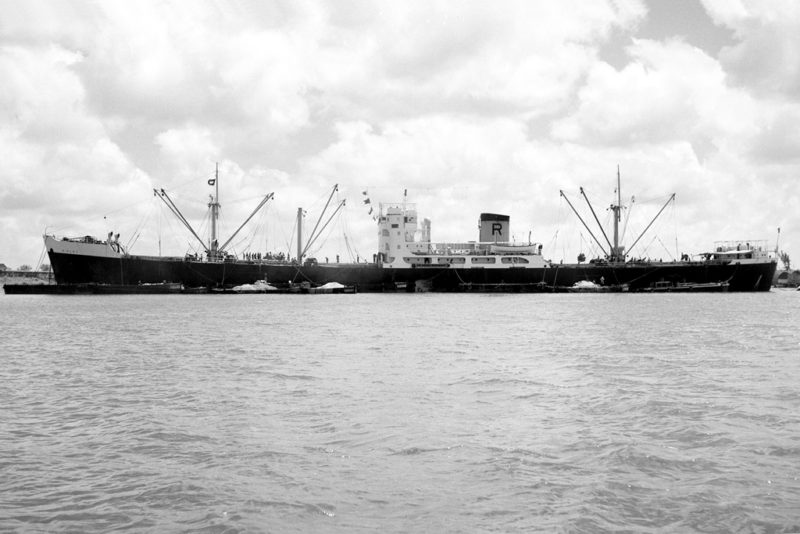
Daniel Stephens was a contemporary shipmaster of Capt. Walter Runciman, coming ashore in 1871 when he was 30 years old after a sea-going career of 15 years to commence shipowning in Newcastle, and taking over the business of Charles West. He married Mary Kendrick of Brixham at the same time and took her brother William V. Kendrick as partner together with Roland Mawson a year later.
Their first steamer was ordered from Robert Thompson of Sunderland and delivered in 1874 as Rayner, followed by Rowland and Rossend Castle from Bartram, Haswell & Company in 1874/75. These tramps were large enough to compete in the ‘Eternal Triangle’ trade of coal out to the Mediterranean with grain homewards from the Black Sea, as well as other world-wide tramping.
William V. Kendrick was despatched in 1877 to Newport to open an office there to obtain charters more easily in the South Wales export coal trade. However he died early in 1878, leaving the Newcastle partnership as Stephens & Mawson, while a separate subsidiary was formed in Newport of Stephens, Mawson & Goss with F.A. Goss of Newport as partner, together with Arthur Mawson, younger brother of Roland. A fleet of smaller tramps was purchased for the Newport subsidiary starting with Verdi, acquired almost new from a North Shields owner in 1880.
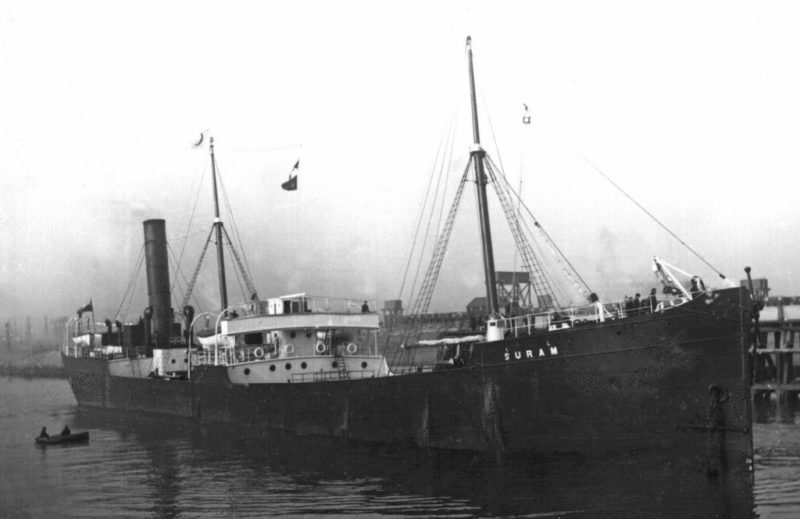
The main Newcastle fleet continued to grow in strength and had reached a total of nine tramps in 1884, when the first in a long line of tramps from Blyth SB & DD Co. Ltd. was delivered as Rothiemay. Daniel Stephens eventually gained control of this yard, becoming a director and Chairman. A slump hit the tramp trades between 1886/88 and three tramps from Charles Tully of Newcastle, who had ceased to trade, were managed until 1904. A further reorganisation took place in 1887 with the formation of the Red ‘R’ Steamship Co. Ltd., and all the Newcastle tramps except the ex-Tully vessels were registered under this company. This company had a nominal capital of £220,000 divided into 20,000 shares of £11 each, with 40% of the shares taken up by the end of 1887, when a red ‘R’ had been painted on the black funnels to possibly signify Roland Mawson or Robert Stephens, Daniel’s brother.
In 1889 Stephens & Mawson along with Prince Line and Hunting and others became one of the first British companies to ship oil in bulk when they took delivery of Kura from Armstrong, Mitchell & Co. Ltd. She was joined a few months later in August 1889 by a slightly smaller tanker Rion with both ships actually owned by Bessler, Waechter & Company of London and Newcastle. Two further tankers for the same owners followed in 1893, Suram from the Laing yard on the Wear and Aras from Palmers on the Tyne. This quartet could lift around 15,000 tons of oil at a time out of the Black Sea or Eastern seaboard/U.S. Gulf ports.
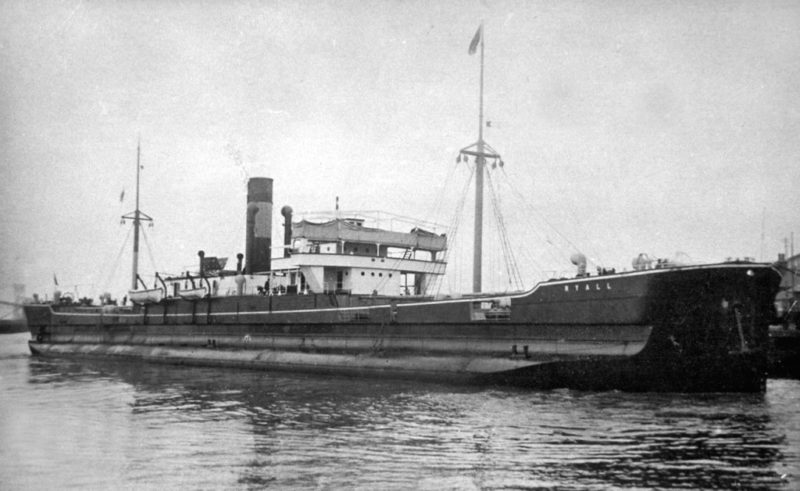
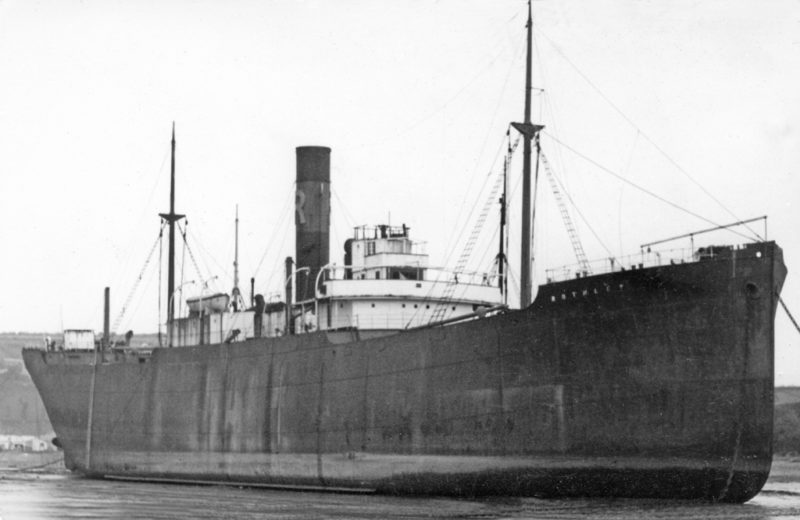
The sharply increasing size of dry-cargo tramps was shown in March 1893 when the first new tramp was delivered to the Red ‘R’ company from Tyne Iron SB Co. Ltd. William Storrs could carry 5,000 tons of cargo and the same yard delivered Sirdar of the same size in January 1899.
At the turn of the century, the size of the two tramp fleets at Newcastle and Newport was:-
Stephens & Mawson, Newcastle – 6 tramps, 4 tankers
Stephens, Mawson & Company, Newport – 4 tramps
R.M. Sutton had been admitted as a new partner to the Newcastle partners in 1895 after the death of the original partner Roland Mawson, and in 1901 the opportunity to include his name in the managing partnership was taken with the parting of the ways of the Newcastle and Newport fleets. Stephens, Sutton & Stephens was formed in Newcastle with the managing principals:-
Daniel Stephens; Henry C. Stephens, his son; R.M. Sutton
Arthur Mawson & Company of Cardiff took with him the three tramps, Cassia, Crimea and Dingwall, the remainder including those of the Red ‘R’ company were managed from Newcastle.
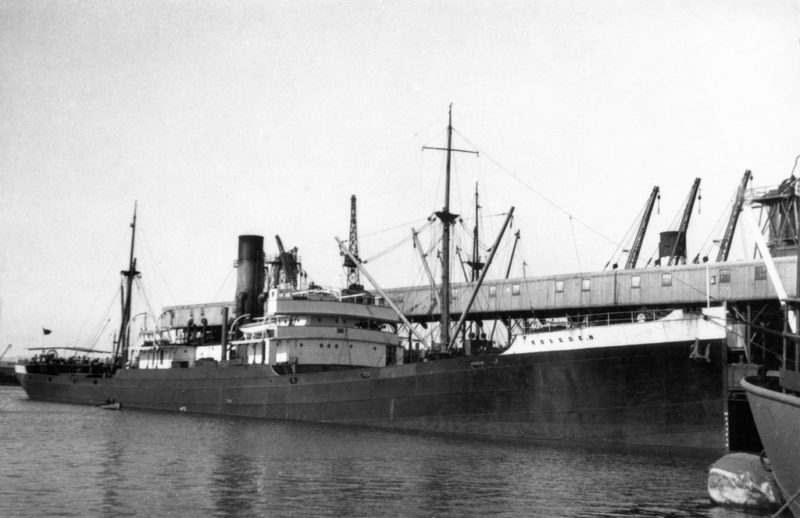
The first new tramp delivered in 1901 to Stephens, Sutton & Stephens had, in fact, been ordered by Bowring and their English & American S.S. Co. Ltd. from Swan, Hunter at Wallsend. She took the Bowring name of Mira and was completed as a tanker for the Newcastle fleet. A dry-cargo tramp was delivered from the Blyth shipyard as Ravenstone in 1905, followed by the first of two ‘Turret’ types, Ryton from the Doxford yard later in 1905 and her sister Ryall in 1906. The freight market was in slump from this time until 1910/11 when Rothley was delivered at Blyth in September 1911. She replaced Sirdar which had been wrecked in November 1910 west of Molene on the Irish coast while on a voyage from Taganrog to Emden with grain. This was their first marine loss since 1896, their losses previous to that date having been extensive.
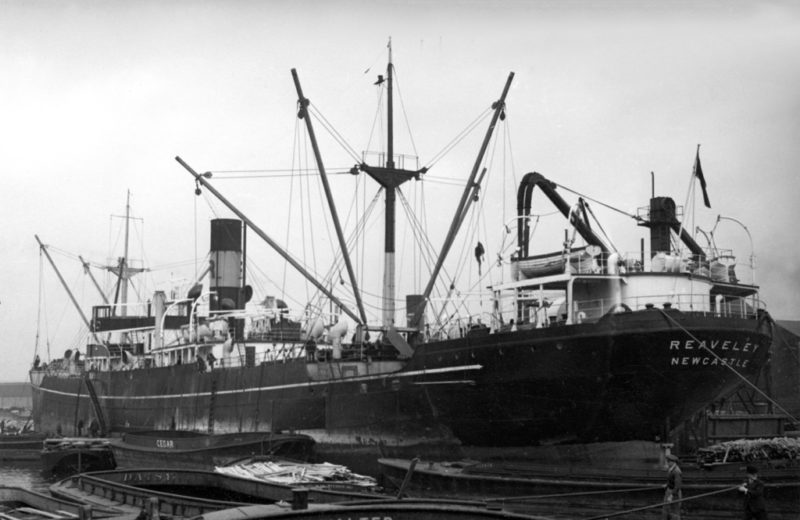
Three more sister tramps of Rothley followed from Blyth SB & DD Co. Ltd. with Roddam in early 1912, Ridley in June 1913 and Ryton in December 1913. However a further option laid down by the yard for the Red ‘R’ company was destined for fame for entirely different reasons. She was purchased on the stocks in May 1914 by the Admiralty and launched on 5th September 1914 as the seaplane carrier Ark Royal. She was commissioned three months later and served throughout WWI before being converted into the depot ship Pegasus in 1923. Stephens, Sutton & Stephens managed a fleet of five tankers and five dry-cargo tramps on the outbreak of WWI.
Three of these were to be lost:-
26.9.1916 Roddam – Captured/sunk by gunfire from U-35 16 miles ESE of Barcelona on a voyage from Savona to Barry Roads in ballast.
5.8.1917 Ryton – Foundered in N.Atlantic on a voyage from Aguilas to Clyde with iron ore.
11.10.1917 Mira – Mined/sunk 4 miles WSW of Beachy Head on mines laid by UCSO on a voyage from Port Arthur, Texas to Dover with fuel oil.
Ryton foundered after striking a submerged object believed to have been a U-boat. Ravenstone had been sold to Christian Salvesen of Leith in 1915 to take advantage of the high prices then offering
and after the loss of Mira in November 1917 an offer was accepted from the recently established British Tanker Co. Ltd. for the four remaining tankers, Kura, Rion, Aras and Suram. The newbuilding market was exhausted and all available second-hand tankers were being purchased.
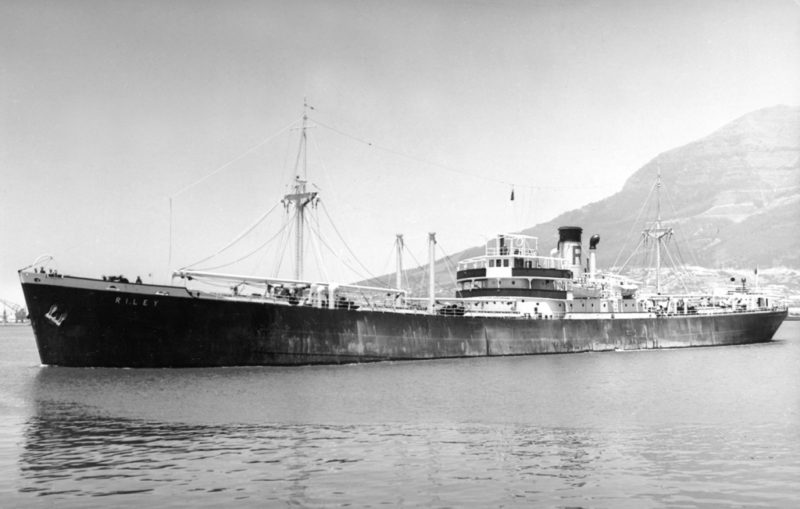
The dry-cargo fleet was now down to only Rothley and Ridley but was increased with the delivery of the new Roseden of 6,500 dwt from the Blyth yard in April 1918, the last in the line for the company from Blyth. Two WAR ‘Z’ tankers were briefly managed for the Admiralty for a few months from the end of 1918.
The management was once again reorganised on 29th August 1919 when Stephens, Sutton Ltd. was formed to take over the assets of Stephens, Sutton & Stephens. The founder, Daniel Stephens, was now eighty years of age and died later on 19th March 1926. Ridley of 1913 was sold to Cardiff owners in 1920 to take advantage of the high second-hand tramp prices of the post-WWI boom. However boom was immediately followed by slump and no effort was then made to renew the fleet throughout the depressed 1920s.

The Red ‘R’ fleet had only two tramps trading between 1924 and 1933, Rothley and Roseden. Rothley was sold to the Livanos family of Greece in 1933 and renamed Kyma.
Rothley was replaced by two steam tramps completed by Doxford in 1929 as June and Juliet for Norwegian owners before passing in 1932 to Essex Line Ltd. (Meldrum, & Swinson) as Essex Oak and Essex Noble. They were renamed Ridley and Reaveley respectively and continued to trade alongside Roseden until Ridley was sold in 1935 to Turnbull, Scott & Co. Ltd. and renamed Redgate. In 1936 Roseden was sold to Frank L. Dawson of Newcastle and renamed Leo Dawson.
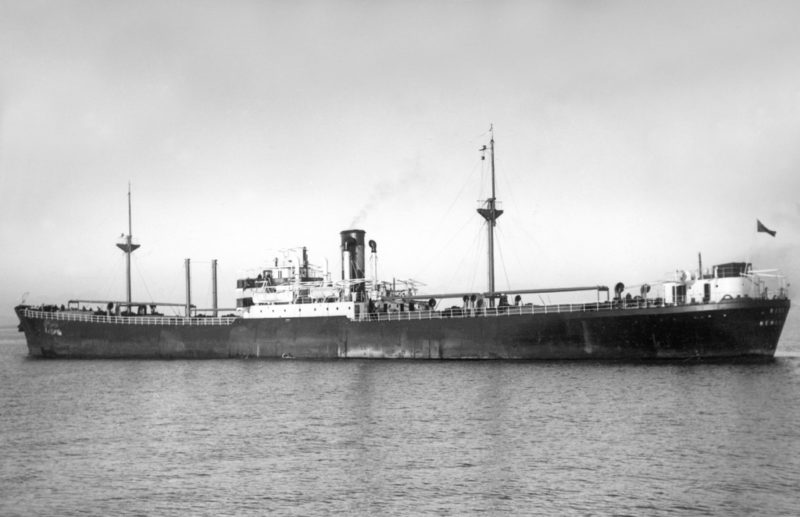
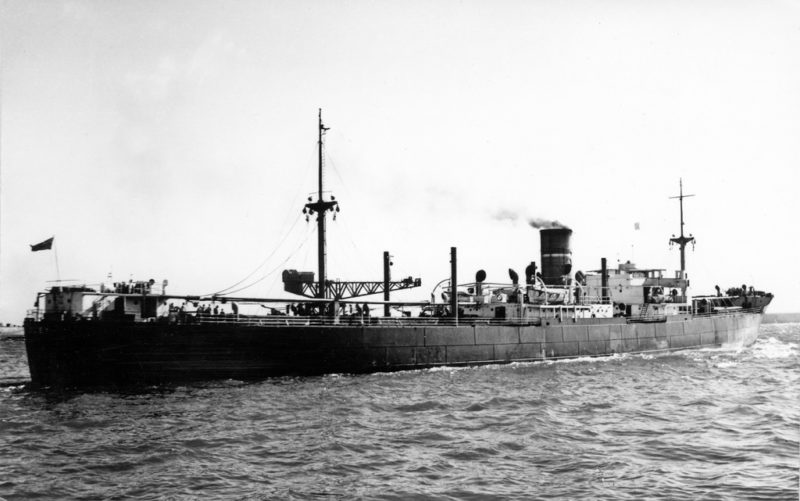
Stephens, Sutton Ltd. were now to take full advantage of the Government ‘Scrap & Build’ Scheme of 1935 and Shipping Loans of 1939 to build up a fine fleet of ten motortramps by 1939. Twelve old tramps were bought in especially for the ‘Scrap’ part of the scheme and included old Eagle Oil tankers, Turnbull Scott tramps and cargo-liners from Clan Line, Glen Line and Ellerman. All six new tramps under Scrap & Build were ‘Doxford Economies’ with Rugeley the first delivered in February 1936 and a further four were ordered under the Shipping Loans of 1939. These were:-
Rugeley, Riley, Rothley, Ripley, Ridley, Rodsley, Rodsley (2), Rawnsley, Rookley, Reaveley
Stephens, Sutton Ltd. thus became the shipowner with the biggest fleet of ‘Doxford Economies’ with Sir Arthur Sutherland, who had ordered the prototype in 1934, having the second highest total. The first Rodsley was sold before completion in August 1937 to A/S J. Ludwig Mowinckels of Bergen to be completed as Troma. Two new shipping companies had been formed in 1935 to be the owners of the new motortramps:-
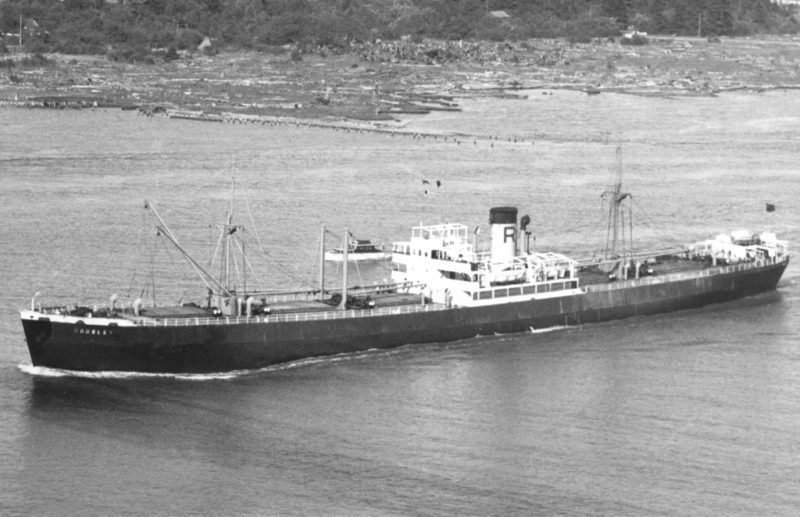
Whalton Shipping Co. Ltd.
The Renw1ck family, formerly of Tynemouth, were the major shareholders, George Renwick having started trading with Joseph Fisher of Hexham and a small tramp fleet in the 1880s as Fisher, Renwick & Company. The Fisher family had moved to Manchester in 1894 on the opening of the Canal, founding Manchester Dry Docks and a coastal general cargo service from Manchester to London. George Renwick later became Lord Mayor of Newcastle and was knighted. He paid for the erection of the large WWI memorial in the Haymarket in the city in 1923. He sold his last steam tramp in 1928 but the family wealth was reinvested in the Whalton company as owners of four ‘Doxford Economies’ by his son Sir Eustace Renwick, who named the new company after the family residence at Morpeth.
Thomasson Shipping Co. Ltd.
The major shareholders were the London merchant bankers J.F. Thomasson & Company and four ‘Doxford Economies’ were registered under this company, with the remaining two under the long-established Red ‘R’ company. Rugeley was completed for the Red ‘R’ in February 1936 and made three voyages to the Plate to load grain for Avonmouth. She then dry-docked at Cardiff on 20th February 1937 before sailing in ballast for British Columbia to load lumber at Vancouver, Port Alberni, Crofton, and New Westminster City. This was taken to Shanghai and after calling at Taku Bar she proceeded in ballast to Sydney (NSW) to load grain for Hull and Manchester.

Three of the motortramps were to be lost to marine causes and enemy action during WWII:-
9.11.1940 Ridley – Lost by fire NW of Cape Verde Islands on a voyage from the Clyde to Pepel in ballast.
8.5.1941 Rawnsley – Bombed off Crete on a voyage from Haifa to Suda Bay, taken in tow for Makryallo Bay for beaching and anchored in Hierapetra Bay where she sank on 12th May.
19.10.1942 Rothley – Torpedoed/sunk 350 miles ESE of Barbados on a voyage from Durban to Trinidad and New York in ballast, 2 lost.
Two DFDS American traders were managed for the Ministry of Shipping together with two standard ‘Empire’ types and one Canadian-built ‘Fort’. Ripley was sold in 1941 to the South American Saint Line, leaving the fleet at the end of the war at five motortramps.
Rugeley and Reaveley were sold to London Greek owners Hadjilias & Co. Ltd. in 1948 to become their Stylehurst and Grenehurst respectively, while Rodsley went to Swedish owners in 1952, leaving only the last two Doxford Economies Riley and Rookley to trade on until 1956 when they were sold to Greeks. There were two replacements during this time, Hopecrown of 1937 renamed Radley in 1950, purchased with her single-ship company Clive Shipping Co. Ltd. and the first of the post-WWII replacements, Ripley of 1953:-
5 MOTORSHIPS OF 10,000-14,600dwt
Short Bros (3) Ripley, Rodsley, Radley
Swan, Hunter (2) Reaveley, Riseley
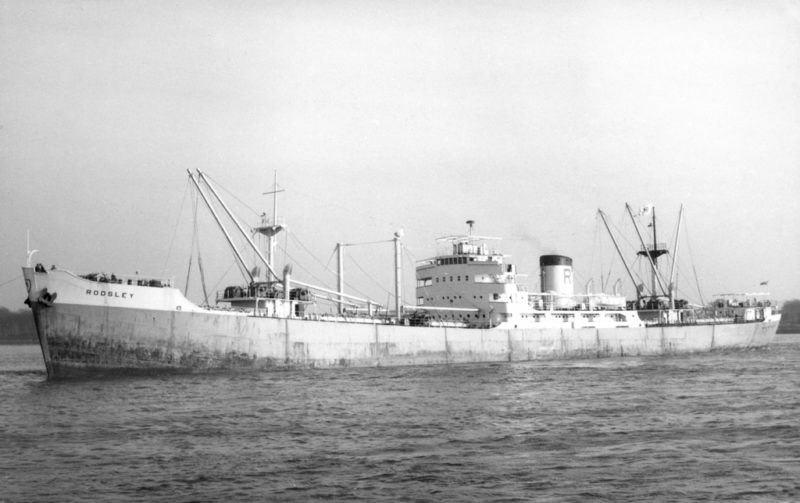
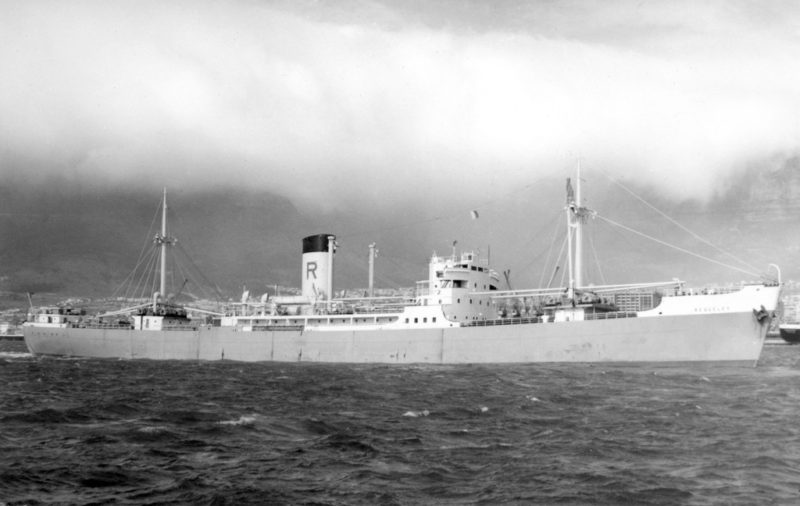
Rodsley and Reavely were delivered in 1956, with the latter being launched for the Whalton company on 15th September 1955 by Lady Renwick, wife of Sir Eustace Renwick on the occasion of their 21st wedding anniversary. This third Reaveley in the Whalton fleet cost six times more than the first of 1937 with running costs roughly five times more. Reaveley ran trials on 29th December 1955 and attained a speed of 15 knots from her Doxford-type oil engine. Riseley of 1957 was of similar size as Ripley of 1953 with five holds but had her Doxford oil engine and superstructure moved right aft, and was one of the first such British tramps to do so along with those of Buries Markes Ltd.
A return to the ‘threequarters aft’ position was made with Radley of 1963. The fleet funnel had changed to yellow with a black top and a red ‘R’ around 1950, and these tramps also adopted a new hull colour scheme with grey hulls and green boot-topping.
Rodsley and Ripley were sold to Greek and Hong Kong owners in 1963 and replaced by the new Radley of that year. The fleet had temporarily been boosted by two purchased tramps, the first a standard ‘Empire’ renamed Rugeley and the second was Welsh Trader of 1954 from Trader Navigation Ltd. which was renamed Rookley. This latter pair were sold during 1963/64 leaving only Reaveley, Riseley and Radley to trade world-wide. In November 1964 the Thomasson family withdrew from banking and shipping and their managers Stephens, Sutton Ltd. bought up their shares in Thomasson Shipping Co. Ltd. The Whalton and Thomasson companies were then forged into one unit by the Thomasson company acquiring 51% of the shares of the Whalton company.
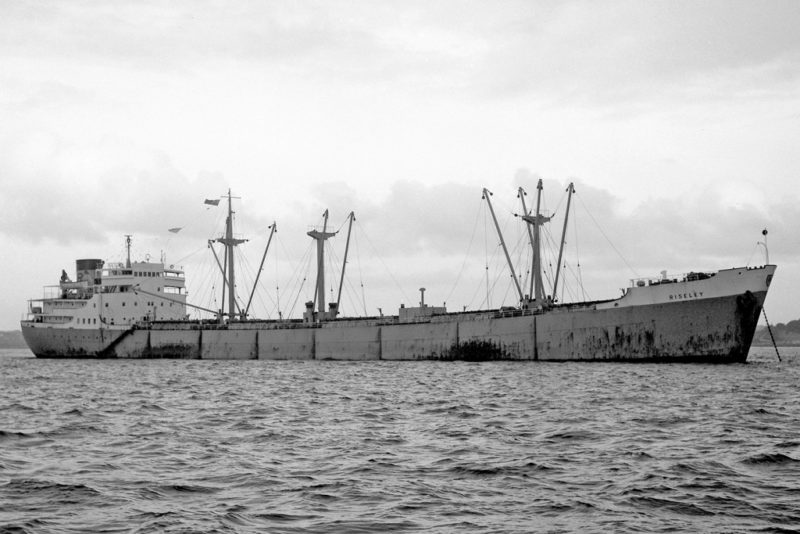
The merged company entered the bulk carrier era in January 1965 with the delivery of Riley of 28,360 dwt from the Tees yard of Smiths Dock Co. Ltd. While operating economies accrued from her size and ability to win larger charters, these were off-set by severe machinery problems which developed soon after her delivery and she spent some time in Tyne repair yards. This was compounded by engine repair bills for the tramp Reaveley, which had discharged in Liverpool in the summer of 1966 and then ballasted round to Dunkirk to load fertilizer for China. Shen then made two identical voyages in ballast from China to Vancouver to load timber back to Japan, and then ballasted from Shanghai to South Australia. She frequently broke down, spending two months under repair at Vancouver and almost the same at Moji in Japan. She spent another couple of months lying at anchor off Djibouti before the tramp was towed to Durban towards the end of 1967 and handed over to new Greek owners.
Shareholders had been informed in August 1967 that all four ships were for sale and the tramp Riseley also found immediate Greek buyers. The tramp Radley of 1963 ended her last voyage for the company in 1968 and was handed over to the Greek Venizelos family, while the bulker Riley traded first under the Liberian flag and then for Chinese owners.
The proud red ‘R’ houseflag thus vanished from the high seas, some 94 years after Daniel Stephens had begun in business as a shipowner.
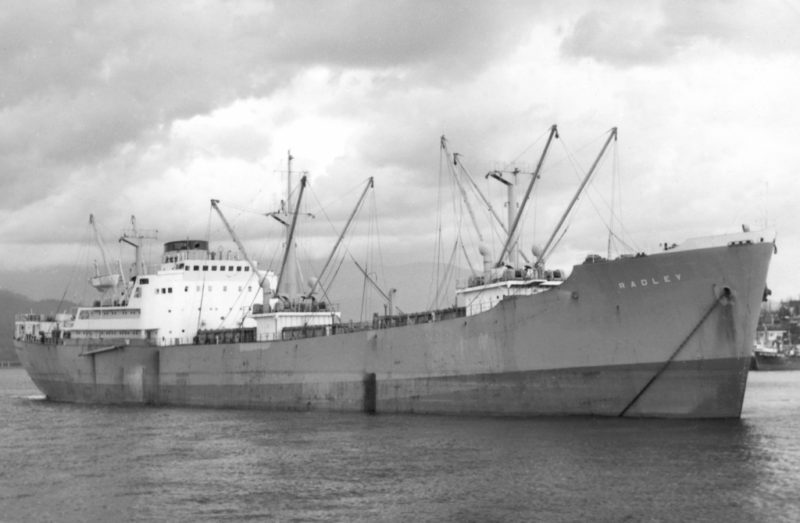


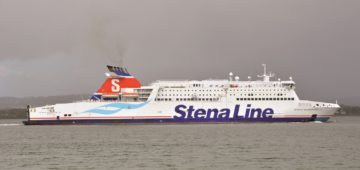



Comments
Sorry, comments are closed for this item